Multimedia Content
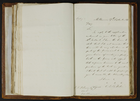
Copy of letter from Charles La Trobe to J Palmer, Esq, 27 September 1843, courtesy of Public Record Office Victoria, Victorian Archives Centre.
Details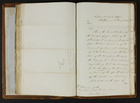
Letter from Charles La Trobe to Chairman of Council, 21 August 1843, courtesy of Public Record Office Victoria, Victorian Archives Centre.
Details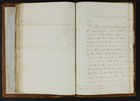
Letter from Charles La Trobe to Chairman of Council, 21 August 1843, courtesy of Public Record Office Victoria, Victorian Archives Centre.
Details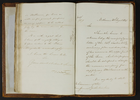
Letter from Charles La Trobe to Chairman of Council, 30 August 1843, courtesy of Public Record Office Victoria, Victorian Archives Centre.
Details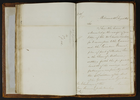
Letter from Charles La Trobe to Chairman of Council, 30 August 1843, courtesy of Public Record Office Victoria, Victorian Archives Centre.
Details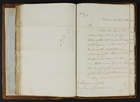
Letter from Charles La Trobe to Chairman of Council, 30 August 1843, courtesy of Public Record Office Victoria, Victorian Archives Centre.
Details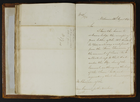
Letter from Charles La Trobe to Chairman of Council, 30 August 1843, courtesy of Public Record Office Victoria, Victorian Archives Centre.
Details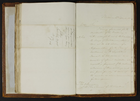
Letter from Charles La Trobe to Chairman of Council, 4 September 1843, courtesy of Public Record Office Victoria, Victorian Archives Centre.
Details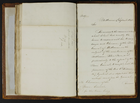
Letter from Charles La Trobe to Chairman of Council, 4 September 1843, courtesy of Public Record Office Victoria, Victorian Archives Centre.
Details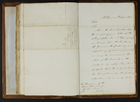
Letter from Charles La Trobe to Chairman of Council, 8 September 1843, courtesy of Public Record Office Victoria, Victorian Archives Centre.
Details
Mayoralty
Melbourne's first mayor, elected by fellow councillors in 1842, was a brewer, Henry Condell. The office embodied civic leadership but also involved minor judicial functions. In early years the annual contest was influenced by commercial, sectarian and national rivalries, and by Freemasonry. After Separation the political ambitions of many leading citizens shifted to the Victorian Parliament but the mayoral election continued to attract interest, often overshadowing elections for the Melbourne City Council. The creation of additional municipalities from 1854 replicated the office throughout the suburbs but the Mayor of Melbourne has always been pre-eminent.
Gold-rush Melbourne saw the Argus newspaper condemn seven-times mayor, wealthy colonist J. T. Smith, as the leader of a clique of city publicans grown newly rich on the influx of immigrants. A new breed of conservative self-made commercial and professional men entered the Council from the 1860s, including the financier William Bayles and the auctioneer Edward Cohen. Both became mayor, as did in later years the flamboyant entrepreneur James Butters, contractors Samuel Amess, Thomas O'Grady and John Pigdon, the eccentric hat manufacturer James Gatehouse, brush manufacturer John Zevenboom, shipowners John McIlwraith, John Paterson and Malcolm McEacharn, lawyers James Stewart, Arthur Snowden and Samuel Gillott, and wine and spirit merchants Godfrey Carter and Matthew Lang. 447 Mayoral portraits lined the walls of the Melbourne Town Hall auditorium until fire destroyed many of them in 1925 (Samuel Amess' portrait by Tom Roberts survived). The robes, heavy gold chain, public entertainments and ceremony were sufficient reward for some, but J.T. Smith's failure to be knighted following a presentation to Queen Victoria in 1858, which delighted his enemies, was seen as a rebuff to the city. The Jewish merchant Benjamin Benjamin was Melbourne's first mayoral knight in 1889, followed by Arthur Snowden (1895), Malcolm McEacharn (1900) and Samuel Gillott, who in 1901 entertained the Duke and Duchess of Cornwall, then visiting Melbourne for the Federation celebrations, after which the title Lord Mayor was conferred on the office.
For many, the mayoralty capped a successful business career and reflected public esteem, but the occupants needed to be men of means able to contribute wisdom, time and personal funds. An accomplished Lady Mayoress was an advantage, underscoring the office's social role that includes hosting balls, dinners, and receptions for royal visits, dignitaries, naval detachments, pop stars - such as that for the Beatles in 1964 - or sporting heroes. The mayoralty also launched causes and charitable initiatives, such as the Lord Mayor's Fund and the Lord Mayor's Camp at Portsea. Frank Stapley (1917-18) advocated city planning. Sir Harold Gengoult Smith was involved with the centenary of Melbourne. Sir Harold Luxton and Sir Raymond Connelly helped secure the Olympic Games in 1956. Cr Ivan Deveson (1995-98) highlighted problems of drug dependence.
The 1980s saw the election of Melbourne's first Australian Labor Party mayor, Cr Bill Gardner in 1983, and in 1987 the first woman, Cr Lecki Ord. Following the 1992-95 restructure of municipal government, the Melbourne City Council was reinstated, with its mayor now elected directly by the citizens for a three-year term.
- References
- Dunstan, David, Governing the metropolis: Politics, technology and social change in a Victorian city: Melbourne 1850-1891, Melbourne University Press, Melbourne, 1984. Details
